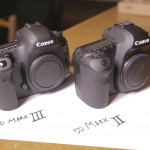Uncategorized |
Studio B Team
Hello camera junkies and non junkies!
First off, let me introduce myself, as I am new to this blog. I am Alrik Bursell, the Rentals and Equipment Manager here at Studio B Films.
Last year was a rush and a blast. We were slammed with so many different jobs, so many different shoots and so many different wonderful people coming in and out of the office all year round. We were also bestowed with a plethora of ‘fancy pants shining new gear’, that I am sure most people don’t even know that we have. Almost all of it is on our website (the rest will be shortly) but I am going to do a run down of all the shiny new toys we have in rentals that we acquired over the year. So, lets begin!
New Gear in 2011
Arri Alexa Digital Film Camera

Bam! Is this a big one or what? One of, (if not the number 1) top digital film camera working in the business today, and we got one here in our humble little office. We have used it to shoot a number of our latest videos and its always out of the office on rental. Please check our website for more info. But to summarize: Shoots to Apple Pro Res Files (in a variety of flavors), has 11 stops of dynamic range and it has one of the best sensors out there. But don’t trust me, the super awesome Roger Deakins who shot pretty much all of the Cohen Brothers Films, The Shawshank Redemption and countless other classic films says “[T]his camera has brought us to a point where digital is simply better”. And thats not just a fancy sound byte, he is currently shooting the latest Bond Movie Skyfall on the Alexa Studio Camera with Master Prime Lenses, using a Codex Deck to record in ARRIRAW, presumably at 4k, thank you very much IMDB.
Sony F3 Camera

The hot camera this time last year (and still hot in my opinion) the Sony F3 basically took the excellent pmw-EX1 chopped off the lens and threw on a pl-mount, at a very reasonable price tag. The dream camera for indie film makers and on a budget DP’s/Camera Ops, the F3 offers a great looking super 35mm sensor which captures very beautiful images with the ease of use of an EX1. Add the fact that you can send an HD-SDI signal out to a variety of digital recording decks, like the AJA KiPro or KiPro Mini to record directly to Apple Pro Res, then you have got your self quite a package. I am going to do a blog post about the F3 in the next week or so, so keep your eye open for that. For more details on the F3, guess what, click here!
Lenses
Arri/Zeiss Ultra Prime Lenses

Another major addition to our arsenal, we use these almost on a daily basis. We have a 6 lens set, which includes a 18mm, 24mm, 32mm, 50mm, 85mm and 100mm lens. You can find all the lens specs here. These are not quite at the level of the Master Primes, but from our tests, the quality jump versus the price jump from the Ultra Primes to the Master Primes, is not quite worth it, especially if your final video is not going to exceed a resolution of 1920×1080. These are the top lenses that we have to offer here at the Studio and they would be a perfect match for the F3, Red Epic, Arri Alexa or any PL Mount camera.
Zeiss ZF and ZE Cine Modded Prime Lenses
 (Please note, the lenses in this pic are not cine modded!)
(Please note, the lenses in this pic are not cine modded!)
More lenses! We already had a handful of the Zeiss ZE Primes for our 5D’s and 7D but we decided to go ahead and flesh out the set to a full set of 6 lenses: 18mm, 21mm, 32mm, 50mm, 85mm and 100mm macro. We then had local DP Jason Joseffer take them into his lab and add custom delrine gears for our line up of follow focuses and we slapped step up/step down rings to make the front diameter of the lenses uniform at 80mm.
We also have a near identical set in the ZF .2 series from Zeiss, including: 18mm, 25mm, 32mm, 50mm, 85mm and 100mm macro. The main difference between these two sets is the aperture control. On the ZE series it is electronic and speaks directly to the camera, giving you your iris control through the camera display. The ZF series uses a manuel iris ring, which you control on the lens barrel and there is zero electronic communication with the camera. Jason also did the cine modding on this set, but in addition of adding the gears, he ‘de-clicked’ the manual iris ring, allowing for a smooth exposure adjustment, on the fly. For more info on these baby’s, check out the ZE Lenses here and the ZF lenses here.
Break!
Like I said, we had a really big year, and there was a lot more gear that we got our hands on which I still need to get to, but I want to get this out in the world so I’ll be back with part 2 next week.
Thanks for reading and keep your eyes on this blog, as I intend to bring a new post to you guys and gals on a more regular basis.
READ MORE























